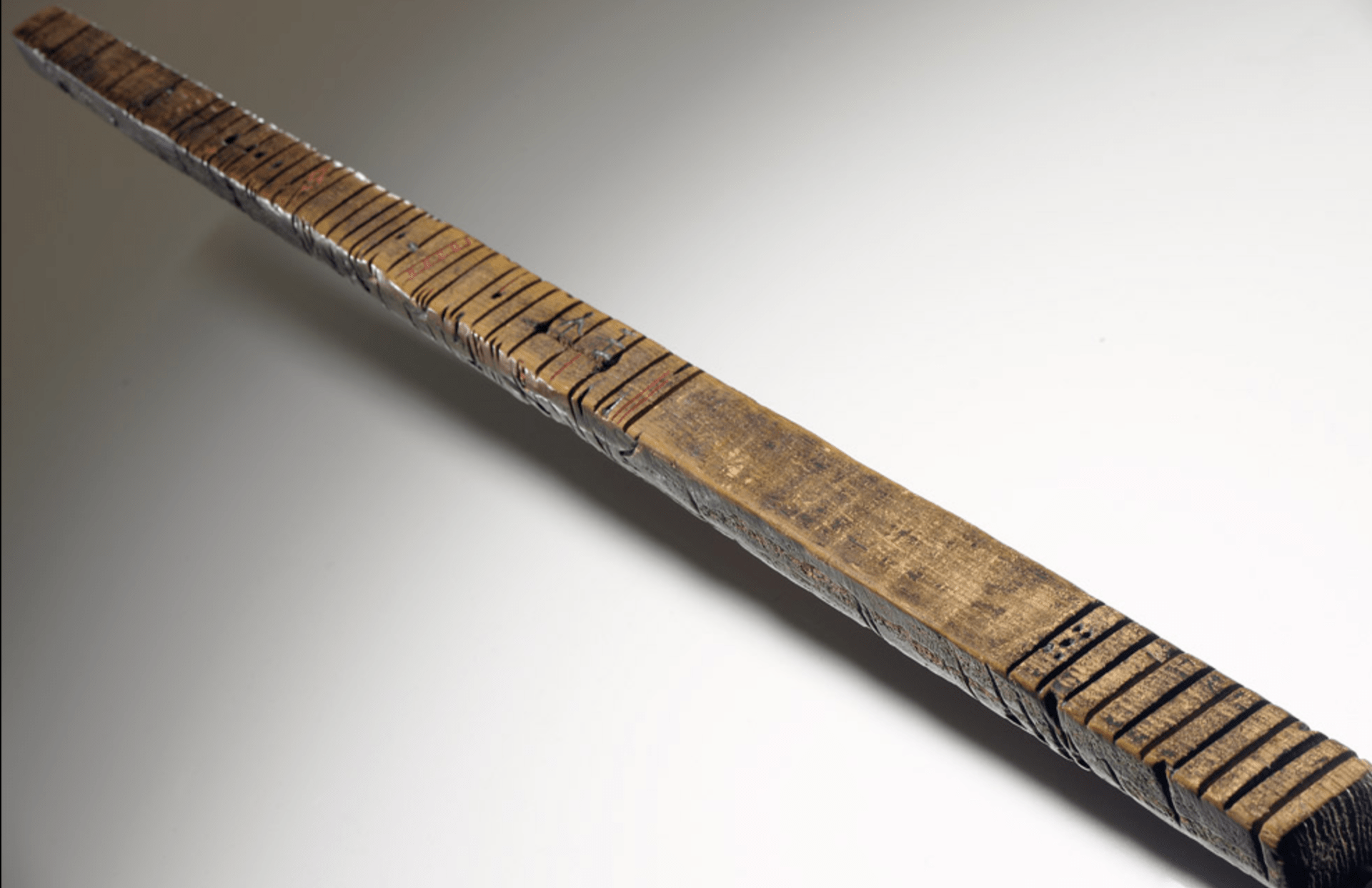Unit 4 | Cultures of the Americas (5th c.BCE– 15th c. CE)
OBJECT DESCRIPTION:- Akimel O´odham (Pima) Oos:hikbina (calendar stick)
Date:– ca. 1833–1921
Medium: Saguaro cactus wood, paint
Dimensions: 91 x 3 x 2 cm
Location- National Museum of the American Indian
WHY ? & WHAT ?
- In the absence of a formal written language, the O´odham of southern Arizona relied on oral tradition for memorializing significant events. The Oos:hikbina—translated from O´odham as “stick cuts upon”—was one way the Akimel O´odham (River People) annotated oral history. The other manner of revitalizing human memory is through songs.
- The O’odham reckoned their history using “calendar sticks”-ribs from the saguaro cactus, marked with distinctive figures that helped their keepers to recall important events on a year-by-year basis. In keeping with the importance of water to life in Sonoran desert, the O’odham measured each year not from January to December but rather from one summer rainy period to the next.

HOW?
- Most often, an Oos:hikbina was made by trimming a dry saguaro cactus rib flat on one or two sides to enable the recorder and keeper of the Oos:hikbina to etch dots, small notches, V-shaped cuts, and deep straight lines across the stick representing years. The symbols were often painted with natural pigments of blue soot and red clay.
WHERE ?
- Pima, North American Indians who traditionally lived along the Gila and Salt rivers in Arizona, U.S., in what was the core area of the prehistoric Hohokam culture. The Pima, who speak a Uto-Aztecan language and call themselves the “River People,” are usually considered to be the descendants of the Hohokam.
- The Pima are native people of southern Arizona and northern Mexico. Most Pima people are still living in that location today.
- The intensive farming of the Pima made possible larger villages than were feasible for their neighbours and relatives, the Tohono O’odham (Papago). With larger communities came a stronger and more complex political organization.
- They built a network of irrigation canals for farming.
HOW IT CAME TO AN END?
- This Oos:hikbina, kept by Mr. Joseph Head and acquired by the collector Edward H. Davis in 1921, records events beginning in 1833. The Gila River Indian Community, the keeper’s homeland, was established by executive order in 1859. Several battles in which the Akimel O´odham and Piipaash (Maricopa) joined forces against enemy tribes are recorded. Natural phenomena and European influence—including the coming of the railroads in 1878 and 1886—are revealed with etched symbolism. The Oos:hikbina does not record every event that affected the lives of the Akimel O´odham and Piipaash, but it does provide insight into the inevitable progression of new beginnings.






